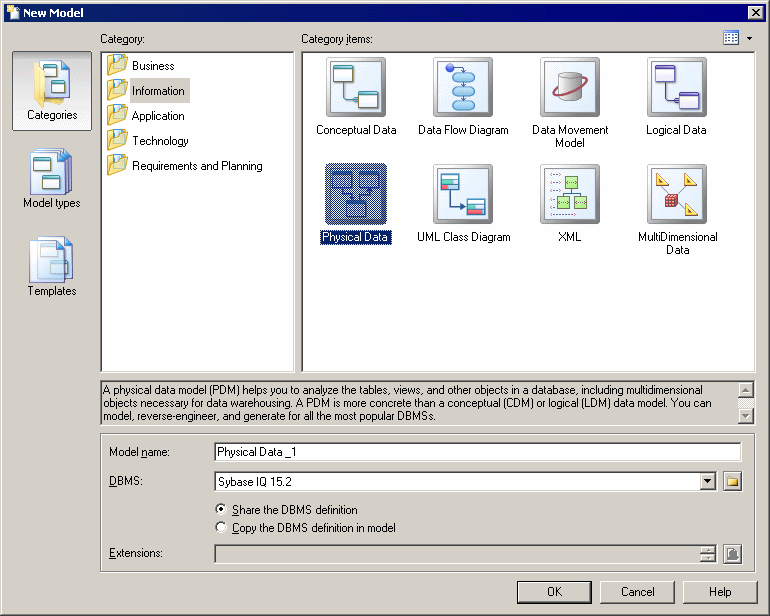You create a new object-oriented model by selecting .
Note: In addition to creating an OOM from scratch with the following procedure, you can also reverse-engineer a model from existing OO code (see Reverse Engineering OO Source Files into an OOM).
The New Model dialog is highly configurable, and your administrator may have hidden options that are not relevant for your work or provided templates or predefined models to guide you through model creation. When you open the dialog, one or more of the following buttons will be available on the left hand side:

- Categories - which provides a set of predefined models and diagrams sorted in a configurable category structure.
- Model types - which provides the classic list of PowerDesigner model types and diagrams.
- Template files - which provides a set of model templates sorted by model type.
